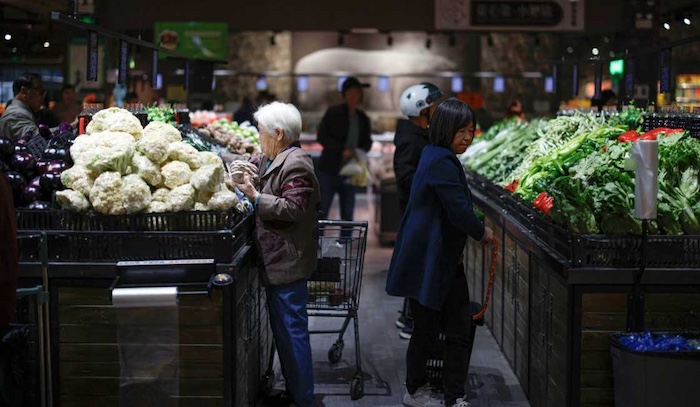
China’s retail sales are growing faster in spite of economic challenges
Retail sales in China increased by 4.0% in January and February, but the country’s persistent economic problems are highlighted by the growing unemployment rate.
Despite a slowdown in factory output and an increase in unemployment, China’s retail sales growth surged in January and February, providing policymakers with a good indication for increasing domestic spending.
The statistic emphasizes the country’s continued economic hardships as a result of fresh pressure from US tariffs.
This year, in an effort to counteract the effects of tariffs imposed by the Trump administration on China’s main export industry, policymakers have prioritized increasing domestic demand.
An extended housing crisis, sluggish consumer demand, and export constraints make it challenging to meet China’s authorities’ goal of “around 5%” economic growth in 2025, according to economists.
The most recent information comes after lower-than-anticipated export and inflation reports earlier this month, highlighting the necessity of additional policy support to maintain economic recovery.
“The harm caused by increased US tariffs on China’s exports poses a risk to the economy and is expected to manifest itself in trade data in the coming months,” stated Zhiwei Zhang, chief economist at Pinpoint Asset Management.
Beijing will probably stick to its existing course of action. He went on to say that there is no pressing need to ease monetary policy by lowering interest rates or the reserve requirement ratio (RRR) at this time, adding that given the uncertainty surrounding trade, policymakers may put off rate reduction for several months.
According to data issued Monday by the National Bureau of Statistics (NBS), retail sales, a crucial indicator of consumption, increased 4.0% in January and February after increasing 3.7% in December. This was the fastest growth rate since November 2024. Analysts had forecast a 4.0% increase.
During the eight-day Lunar New Year celebrations, China’s box office saw record earnings, driven by the animated hit Nezha 2, and holiday demand underpinned household spending in the first two months.
Prioritizing the stimulation of domestic consumption, Chinese officials promised more robust fiscal and monetary support during the annual parliamentary meeting earlier this month.
The government has provided 300 billion yuan ($41.5 billion) for an extended consumer goods trade-in program that includes appliances, electric cars, and other items as part of the measures that have been enacted.
Tianchen Xu, senior economist at the Economist Intelligence Unit, stated that the gain in retail sales was respectable and demonstrated the crucial role that subsidies play in bolstering sales of mobile phones and home appliances.
He cautioned, though, that the program’s effects “may fade over time,” pointing out that car sales had already dropped in the first two months of the year.
Sales of audio-visual equipment and household appliances increased 10.9%, according to NBS data, after rising 39.3% in December. In the meantime, catering income increased 4.3%, which was better than the 2.7% increase in December thanks to the holiday boost.
To further boost domestic consumption, China released a “special action plan” on Sunday that includes steps like increasing household wages and implementing a childcare subsidy program.
The nation’s key economic ministries will brief the media later Monday on other measures to increase spending.
Chinese stocks mostly held steady as investors evaluated the conflicting economic data.
All Categories
Recent Posts
Tags
+13162306000
zoneyetu@yahoo.com



